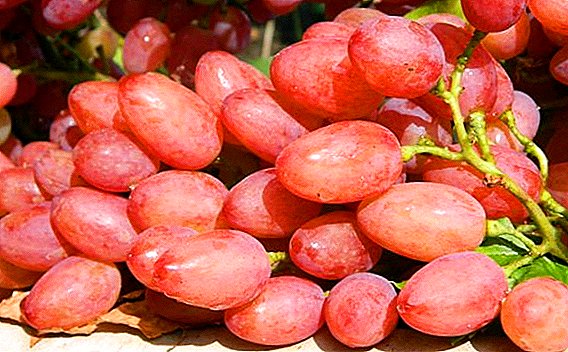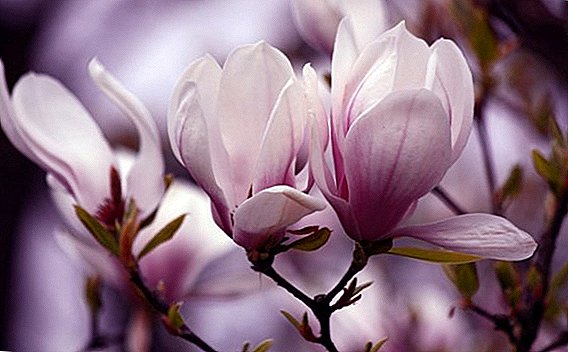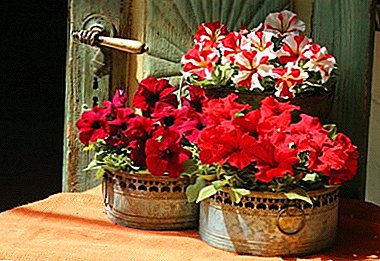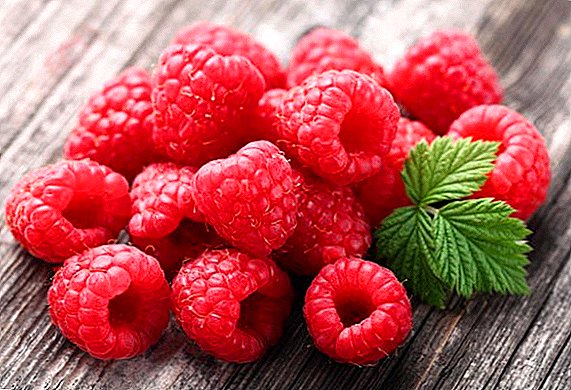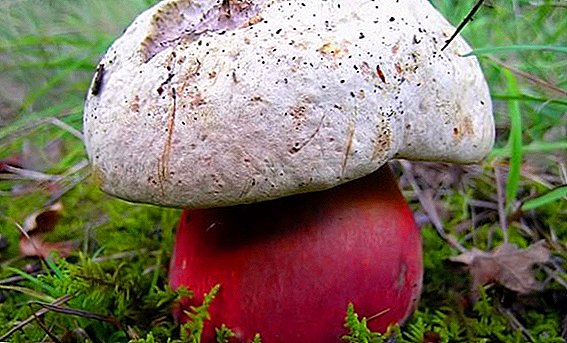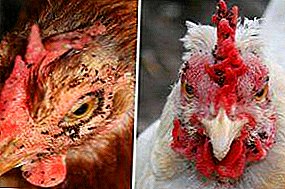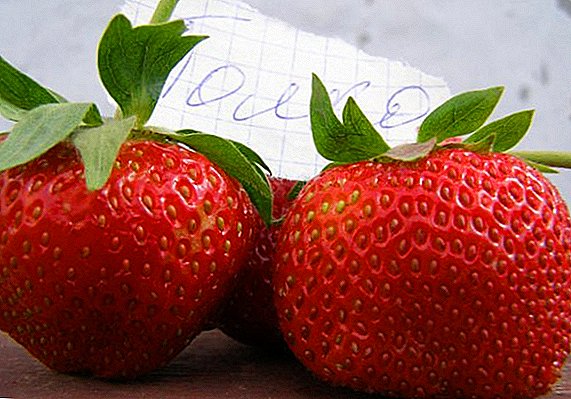 Strawberry-strawberry "Shelf" is not considered a novelty among numerous varieties of gardeners and farmers, but it has not lost its leadership in the ease of affordable agricultural technology and high-quality harvest for over 40 years.
Strawberry-strawberry "Shelf" is not considered a novelty among numerous varieties of gardeners and farmers, but it has not lost its leadership in the ease of affordable agricultural technology and high-quality harvest for over 40 years.
Variety description
Strawberry "Shelf" was bred in the Netherlands in 1977 by selectively crossing strawberry varieties "Sivetta" and "Unduka", after which it quickly became widespread in many countries: Ukraine, Russia, Belarus and the Baltic states. 
Did you know? Strawberries were first brought to the European continent from South America only at the end of the 18th century, but its closest relative wild strawberry has been growing on our lands since ancient times.
Externally, the Shelf plant is a spreading bush of medium height (10-12 cm) with strong pubescent stems of inflorescences that are at the level of the leaves and hold the hanging berries. The foliage is shiny, dark green, with deep teeth along the edges.
The advantages of the variety:
- unpretentious care;
The unpretentious strawberry varieties include such as "Bereginya", "Elsanta", "Zenga Zengana", "Kimberly", "Chamora Turusi", "Tristan", "Kama", "Russian size".
- high safety even at long transportation;
- cold resistance;
- resistance to certain diseases and types of pests;
- delicate aroma and sweet caramel flavor of the berries;
- universality in use (fresh use, all types of processing);
- suitability for industrial cultivation.

The disadvantages of "Shelves" include:
- hard to tolerate drought. Weight is quickly lost, and the taste of berries is reduced;
- requires constant updating of landings;
- bushes require frequent pruning due to the rapid growth.
Distinctive from other varieties, the disadvantage is the rapid degeneration: Although the life cycle of a shrub lasts about 4 years, a good and large crop can be collected from it for only two.
Characteristics of berries and yield
The main advantage of the variety are fruits with agronomic characteristics that are attractive to any gardener:
- in shape, the Shelf berry is a blunt and short cone;
- ripening fruits quickly acquire a pronounced scarlet color, but at the stage of full maturity they turn dark red;
- the covering peel is glossy, densely covered with numerous, not deeply planted seeds;
- the pulp is dense and juicy, there are no voids. It has a saturated coral color around the perimeter, and lighter pinkish shades in the center;
- strawberry taste is sweet with subtle sourness and characteristic "caramel" note in the aftertaste. Pronounced flavor;
- the weight of the berries depends on the time of harvest: the average weight of the fruits of the first wave is about 50 g, the second one is barely 20 g.

You can’t call a super-yielding variety: only 2-2.5 kg of berries can be harvested from one square meter of planted area, however, the Shelf bears fruits stably both in open ground conditions and in a greenhouse.
Agrotechnics of growing and caring for strawberries
Strawberry "Shelf" is rightly considered picky in growing, but to get a truly rich and high-quality crop, you must take into account some important nuances of caring for the variety.
Propagate "Shelf" in three ways: with the help of purchased seedlings, separated whiskers, or planting seed (seedlings).
In our case, it is better to refer to the latter, since step-by-step cultivation from seeds always gives a better result:
- bushes grow much healthier, with good disease resistance;
- yield indicators increase;
- fruits are much larger and tastier.

Selection of seedlings
Every experienced gardener knows that at least 50% of success depends on the correct choice of quality seedlings:
- planting material should always be bought in specialized stores where you can get a free consultation of the seller and carefully consider the goods;
- The package with the material must be intact, with a specified expiration date.
Important! The fresher the seeds, the higher they will germinate, so you should not take those that will soon expire.

Seeds for planting can be prepared independently, the main thing is to carry out this process in accordance with special instructions:
- take a ripe, washed berry and cut off the top of it;
- gently peel off the top of the seed skin and lay it on a thick, clean cloth or paper sheet;
- put to dry in a warm, dry place for 2-3 days;
- after the expiration date, rub the dried material in the palms to extract the seeds;
- put the seedlings in a bag (preferably cloth) for further storage.
You should also remember about pre-treatment of seedlings before sowing, which includes:
- Soak the seeds. Effective preparations "NV-101" or "Zircon" are suitable for manipulation.
- Stratification. The easiest option is to lay out the seedlings on wet cotton pads, cover them with the same discs on the top and put them on the bottom shelf of the refrigerator for 3 days.

Conditions of detention
For germination of prepared seedlings, most often choose special garden transparent containers, which are initially filled with decontaminated using 1% potassium permanganate, then tightly tamped and richly moistened.
Grains are laid out on the soil surface with tweezers with a distance of 2 cm from each other. Then the container is covered on top with a lid with several holes (for ventilation) and is retracted in a warm place, well protected from the destructive direct sunlight.
The best option would be the placement of containers with seedlings on the western or eastern windowsill.
Important! Strawberries do not tolerate picking badly, so the best option for sowing them will be spacious containers, of which you will not need additional transplanting into individual containers in the future.

Soil and fertilizer
It is possible to use for purchase of seeds both the purchased, and independently made soil mix.
For the first option you need the following ingredients:
- lowland peat - ¼;
- river sand - ¼;
- sod land - 2/4.
The second option is a homemade substrate:
- river sand - 1/5;
- vermicompost - 1/5;
- peat - 3/5.
In this case, the soil should be normal or slightly acidic, with a permissible pH of not lower than 5.5. Fertilizers are not required at this stage of planting. 
Watering and moisture
At first, the necessary microclimate is formed inside the container, therefore it is undesirable to open the container's lid. As a rule, seeds do not need watering; they have enough condensate to drain from the surface of the cover.
Learn how to water strawberries when planting to get a bountiful harvest, how often to water strawberries.
After emergence of shoots, the tank must be ventilated daily and ensure that the soil in it is not dry. In the case of dried land, sprouts should be moistened with separated water, watering them at the root with a special medical syringe.
In the future, hydration should be done once a week, in the morning or evening. 
Relation to temperature
To obtain abundant friendly shoots, closed containers with seeds should be kept in a very warm room, with air temperature from +25 to +27 degrees. After the development of seedlings and the removal of the cover, plants can develop at a slightly lower temperature (+20 degrees).
And already before the landing in the ground, about a day, the containers should be determined in a relatively cool room, with an air temperature of about +15 degrees.
Reproduction and planting
In order for strawberry seedlings to grow well, to grow strong, to grow to the right size and to be ready for planting in open ground, at least two months must pass from the time of sowing. 
With regard to the “Shelf”, transplantation must be carried out during a period of gradual heat recession - in the third decade of August or in early September, then the bushes will be able to quickly settle on a new place and have time to get stronger by the winter cold.
Learn about the features of planting strawberries in the fall and spring.
Recommendations for landing and care:
- the soil in which the seedlings will be placed should be slightly acidic, as well as pre-fertilized organic matter (at the rate of 5 kg of manure per square meter);
- the distance between the seedlings should be at least 35 cm, and between the rows - 50 cm, since a tight fit negatively affects their comfort and normal growth;
- the strawberry does not need any additional support - the bushes will root in the ground with a well-developed root system, and a strong stalk with numerous leaves will form on the surface;
- the first time the feeding procedure is carried out in the spring. Fertilizer consists of a mineral additive or a solution of mullein. During the budding stage, the plant should be fertilized with potassium nitrate, chicken droppings or wood ash;
- Watering should be carried out by drip irrigation weekly, starting in mid-April and ending in early August. For humidification, it is desirable to use water at room temperature.

Important! Before the onset of the first cold weather, the gardener needs to think about sheltering Shelves for the winter. Before frosts, strawberries can protect themselves with existing bulky leaves, after - protection will depend on the amount of precipitation. With heavy snowfall, the plants will hide themselves with a large layer of snow, which will provide them with perfect thermal insulation. When dry, windy weather without precipitation, coniferous pine branches, straw and dry leaves will be a good option for shelter.
As noted above, in addition to growing out of seeds, strawberries of the "Shelf" variety can be propagated with the help of whiskers (bush shoots on which the rosettes of leaves have formed).
In order to obtain a suitable planting material, the gardener should select a mustache with a strong rosette in July, choosing the most healthy maternal plant without any pathologies. Next, the outlet must be separated from the main bush and landed separately in prepared containers with a substrate consisting of garden soil, sand, peat and humus.
When the first roots appear on the planted mustache, they should be sprinkled with damp earth. On hot days, watering material is carried out 2-3 times a week. If the weather is rainy, in order to avoid compaction, the soil should be well plowed. Already 2.5 months after the beginning of growth, the rooted mustache will give the first harvest. 
Growing difficulties and recommendations
In addition to the basic rules for planting "Shelves" in open ground, the novice gardener should refer to additional recommendations in order to avoid some of the difficulties associated with the varietal characteristics of the plant in the future:
- Pruning overgrown leaves and whiskers from shrubs. A timely procedure will allow not only to protect the plants from the attacks of pests, but also to provide them with a more comfortable wintering. Trimming should be done in the morning or in the evening, using a sharp shear for manipulation.
- Autumn mulching of the soil protects the flower stalks from contact with the ground, and also provides shelter for the root system in the cold. As organic mulch, humus, straw, compost or manure can be used, and inorganic mulch, stone, plastic film or mulch paper, which does not rot and does not contain harmful coloring components, may be suitable.
Pests, diseases and prevention
Unfortunately, the “Shelf” variety is not distinguished by its ideal immunity to various diseases and attacks of pests, therefore it also needs timely prevention and, in some cases, treatment. 
The most common diseases "Shelves":
- fusarium and late blight - an incurable fungal disease that manifests itself as brown spots on the leaves and petioles, with the edges of the leaf plates bending to the top;

- gray rot characterized by a fluffy bloom on the manifestation of brown spots on the fruits of the plant. It occurs mainly due to frequent rains and quickly jumps to the neighboring berries. The disease is considered incurable, after the discovery of the first signs of the plant should be destroyed;

- white or brown spot - fungal disease, multiplying spores. The leaves appear white or brown spots, which gradually merge, covering the entire surface. As a result, the leaf turns yellow and dies;

- powdery mildew - A disease in which the leaves turn purple and curl into tubes, also white plaque appears on their surface. The fruits of diseased strawberries become deformed and are also covered with bloom.

Among the pests of plants that are very fond of attacking strawberry plantings are noticeable: nematode, weevil, shaggy bronze, strawberry and spider mite, plant louse, bear, slugs and tobacco trips.
Preventive and therapeutic measures:
- timely transplanting strawberries to a new place (at least every four years);
- before planting, the treatment of the root system with a growth stimulator, and the treatment of the soil with a solution of iodine;
- soil mulching;
- before flowering, processing berries Bordeaux liquid (2-3%);
- timely trimming of bushes from excess whiskers and shoots;
- if a variety is damaged, pests of strawberries can be sprayed with a solution of dry mustard, infusion of wood ash, a mixture of wormwood and tobacco, as well as garlic solution.

Did you know? Strawberry is the only berry in the world, the seeds of which are located outside, not inside. They provide the human body with cleansing of slags with insoluble fibers.
Variety "Shelf" is not the first and even more so the best among many other modern varieties. However, gardeners do not cease to plant unpretentious strawberries annually in their plots, hoping to get large fruits from the plant with excellent caramel flavor.
Feedback from network users




